
Related
Guests
- Seema Iyerattorney specializing in constitutional, criminal and civil rights law. She followed the George Zimmerman trial closely.
The only person of color on the all-female jury that voted to acquit George Zimmerman expressed anguish over trial’s outcome in her first interview since the trial. Speaking to ABC, the 36-year-old mother of eight who is of Puerto Rican descent said she believes Zimmerman “got away with murder” for killing Trayvon Martin, and claimed she shares the grief of his mother. Identifying herself only by her first name, “Maddy,” the juror explained her “not guilty” vote by saying the “Stand Your Ground” law was in conflict with her heart, forcing her to let Zimmerman walk free despite believing he was culpable. “It is hurtful as a lawyer for someone to say 'I fought until the end,'” says Seema Iyer, an attorney specializing in constitutional, criminal and civil rights law who followed the Zimmerman trial closely. “No, she didn’t — if she had fought until the end, we would’ve had a hung jury.”
Transcript
AMY GOODMAN: The only woman of color on the all-female jury that voted to acquit George Zimmerman has spoken out for the first time, expressing sorrow and anguish over the death of unarmed African-American teenager Trayvon Martin. The 36-year-old juror, who is Puerto Rican, said Zimmerman, quote, “got away with murder” for killing Trayvon Martin. In an interview with ABC’s Robin Roberts, the juror said she suffers from the outcome of the trial and shares the grief of Trayvon Martin’s mother. Identifying herself only by her first name, Maddy, the juror explained her “not guilty” verdict by saying the law was in conflict with her heart, forcing her to let Zimmerman walk free despite believing he was culpable.
ROBIN ROBERTS: What was your first vote?
MADDY: My first vote was second-degree murder.
ROBIN ROBERTS: Second-degree murder.
MADDY: In between the nine hours, it was hard. A lot of us had wanted to find something bad, something that we could connect to the law. For myself, he’s guilty, because the evidence shows he’s guilty.
ROBIN ROBERTS: He’s guilty of?
MADDY: Killing Trayvon Martin. But as the law was read to me, if you have no proof that he killed him intentionally, you can’t find—you can’t say he’s guilty.
ROBIN ROBERTS: Did you want to step out at all? Did you want to quit?
MADDY: I was the juror that was going to give him the hung jury. Oh, I was. I fought to the end. I mean, it’s hard for me to sleep, it’s hard for me to eat, because I feel that I was forcefully included in Trayvon Martin’s death. And I carry him on my back. I’m hurting as much as Trayvon Martin’s mom is, because there’s no way that any mother should feel that pain.
ROBIN ROBERTS: But you feel, in your heart of hearts, that you and the jury approached it and came with the decision, and you stand by that decision to this day?
MADDY: I stand by the decision because of the law. If I stand by the decision because of my heart, he would have been guilty.
ROBIN ROBERTS: I know that you’ve heard some people have said—point blank, they’ve said George Zimmerman got away with murder. How do you respond to those people who say that?
MADDY: George Zimmerman, that’s—George Zimmerman got away with murder. But you can’t get away from God. And at the end of the day, he’s going to have a lot of questions and answers he has to deal with. The law couldn’t prove it, but, you know, you know the world goes in circles.
AMY GOODMAN: That was Maddy, also known as Juror B29, speaking to ABC’s Robin Roberts about her role in the acquittal of George Zimmerman in the killing of Trayvon Martin. She is a nursing assistant and mother of eight.
Meanwhile, Trayvon Martin’s father, Tracy Martin, visited Capitol Hill Wednesday to urge lawmakers to work to prevent future tragedies like the one his family experienced. Speaking at the first meeting of the newly formed Congressional Caucus on Black Men and Boys, Martin vowed to keep his deceased son’s memory alive by continuing to fight for him.
TRACY MARTIN: I’ve vowed to do everything in my power not to give up the fight for him, not only to fight for Trayvon, but to fight for so many other young black and brown boys of this country. I think the point that President Obama made, that 35 years ago, that this could have been him, was so important to the American people, because, obviously, the most influential man on the planet is weighing in from an African-American’s perspective. And just to have the president of the United States comment on our situation, it really touched home.
And it’s moments and comments such as the president made that—you know, it sparks the conversation in every household over the dinner table. And that conversation is: What can we do as parents, what can we do as men, what can we do as fathers, what can we do as mentors, to stop this from happening to your child? And I think that’s where the conversation begins. A lot of our energy that we’ve channeled, we’ve taken the negative energy that has been throughout this whole process—we’ve taken that negative energy, and we’re trying to turn it into a positive. A lot of people will tell you that nothing positive can come out of death, but I disagree, and I disagree wholeheartedly, because it is what we can do tomorrow as a nation, as a people, to stop someone else’s child from being killed.
AMY GOODMAN: Well, for more, we’re joined now by Seema Iyer. She is an attorney specializing in constitutional, criminal and civil rights law. She has followed the George Zimmerman trial closely.
Seema Iyer, well, we have had amazing insight into the jury over the last week—
SEEMA IYER: Yes, we have.
AMY GOODMAN: —from the first juror who spoke to this latest juror. She said—the juror said, “George Zimmerman got away with murder.”
SEEMA IYER: Yes, and she used those key terms under the law. She said “guilty. She said “evidence.” But what she didn’t say in this interview that you showed, she never discussed self-defense. She never said, “We acquitted George Zimmerman because of self-defense, because, under the law, he was justified.” So, I take great issue with the fact that she started off at murder in the second degree and went to an acquittal.
AMY GOODMAN: Let us go to a series of clips right now of what Maddy—she’s only identified herself by her first name—had to say. She said in her interview with ABC’s Robin Roberts that she feels she let many people down.
ROBIN ROBERTS: What would you—what would you like to say to Trayvon’s parents?
MADDY: I would like to apologize, because I feel like I let them down. I didn’t know how much importance I was into this case, because I never looked at color. And I still don’t look at color.
AMY GOODMAN: ABC’s Robin Roberts asked Maddy about the jury considering a manslaughter charge against Zimmerman at one point in their deliberations.
ROBIN ROBERTS: When you all sent that note to the judge asking for an explanation on manslaughter, what was that about?
MADDY: What we were trying to figure out was—manslaughter, in order to be charged, we had to prove that when he left home, he said, “I’m going to go kill Trayvon Martin.”
AMY GOODMAN: And now we go to another comment of Maddy.
MADDY: I was the juror that was going to give him the hung jury. Oh, I was. I fought to the end.
ROBIN ROBERTS: Do you have regrets that you didn’t?
MADDY: Kind of. I mean, I’m the only minority, and I felt like I let a lot of people down.
AMY GOODMAN: I mean, this is quite remarkable what she has said. As you said, started—that the six-woman jury, non-black jury, three of them were for some kind of conviction—two manslaughter and Maddy for—
SEEMA IYER: Right.
AMY GOODMAN: —second-degree murder—when they first were polled, when they first started deliberations, and three were for acquittal. What is this understanding she has of the law? And also, what does manslaughter mean?
SEEMA IYER: Well, let’s start with this. Manslaughter is generally considered an unlawful killing, and there has to be an intentional act, OK? So, as you recall, murder in the second degree had that element of ill will, depraved mind, evil intent. Get rid of that. So we’re just talking about an unlawful killing with an intentional act. In this case, which is so confounding about her statement, because she makes a point about mentioning the word “intent,” in this case, no one is disputing that it was an intentional act. George Zimmerman pulled the trigger. No one said he didn’t. No one said he was under any outside influence. So that’s not in contention. Yet, she is resting at least part of her explanation on that element. So, I do think, though, that both sides, the prosecution and defense, did not spend enough time talking about manslaughter in their summations. And this has been a prevalent view, at least in the media.
AMY GOODMAN: Well, clearly, the prosecutors did not want to go for manslaughter. They didn’t originally charge. As they saw the trial going on, they saw they were in a bind, and so they—isn’t that right? They then introduced it.
SEEMA IYER: Well, it is partially correct. Generally, prosecutors charge the highest charge they can possibly make a tangential connection to. And Zimmerman’s actions made the connection to that depraved mind element, so they charged murder in the second degree. Now, the other reason that you charge a bit higher is for plea bargaining’s sake, that if Zimmerman was amenable to a plea, he could have pled to the manslaughter at that point. And finally, in a trial, you always expect that a lesser-included offense is an option, so you have to argue that. And that was a huge deficiency in the prosecution’s summations—and, frankly, the defense, but I can somewhat understand why the defense didn’t do that. They went for the—
AMY GOODMAN: They wanted the all or nothing.
SEEMA IYER: —all or nothing at all, right. But prosecution, you have to. I think—this is one thing that I just don’t understand. You can’t ignore evidence. You can’t talk to a jury and pretend, oh, this didn’t happen, or like just shut your eyes to certain types of evidence. You have to address everything.
AMY GOODMAN: I want to ask you about a few issues in the trial—first of all, the jury. It’s a six-woman, non-black jury.
SEEMA IYER: Right.
AMY GOODMAN: You know, we often say the word “non-white. The person is non-white.” We don’t often say “non-black.” But this is extremely relevant here. How does that happen? Can you explain for a general audience how do jurors get chosen?
SEEMA IYER: Sure, OK. Now, generally speaking, in most states, for felonies, it is a 12-person jury. And for misdemeanors, it’s a six-person jury. In Florida, only capital cases, so those involving death penalty, are 12-person juries. This is a huge issue which is now being, thankfully, brought up with the Legislature perhaps changing that rule, because a six-person jury is not as representative. You don’t have as many voices for both sides, OK? So, the—I guess the trick in selecting a jury is that you have to have—you pick person by person, so if I have you, and then I have the cameraperson, and then I have the producer, I am having one by one by one. You don’t pick in a group. So after I have six people, I look, and I say, “Oh, well, I have six white people, or I have six women.” But you can’t go back.
AMY GOODMAN: But you see that at three, you see that at four. You see you’re getting a non-black jury. You don’t have any single African American.
SEEMA IYER: But you have—right, but you have challenges, and the other side has challenges. So, at this point it’s very hard to gauge. You could set yourself up to have women and men, black and white.
Now, another huge issue with Sanford County, Sanford County is—I think it’s approximately 70 percent white. So when they say “a jury of your peers,” you are starting off with a jury pool that is representative of the county. OK, so all those people that walked in—you remember, there was two or three days of jury selection—they were mostly white people. But the jury that is chosen is also depending on the questioning, so there was a lot of questions going back and forth about how many people knew about this case, and many people did know about this case, and that’s how they ended up with this jury.
I will tell you, I have no idea how the prosecutors allowed that woman, Maddy, on this jury.
AMY GOODMAN: Because?
SEEMA IYER: Everything she says is just absolutely preposterous, from—it’s so—it’s hurtful, as a lawyer, for someone to say, “I fought. I fought ’til the end.” Well, no, she didn’t, because if she fought to the end, we would have had a hung jury. And that is also the prosecution’s issue, is that they did not question the jurors enough and let them know that it’s a possibility: You don’t have to come to a verdict.
AMY GOODMAN: She clearly wanted to be on this jury. But let’s go to another of the jurors, the first one who spoke out. Earlier this month—
SEEMA IYER: B37.
AMY GOODMAN: —Anderson Cooper did the first interview with another of the six women jurors. She was seated in darkness. She was only identified as “Juror B37” in the interview. She didn’t identify herself like Maddy did. Cooper talked about Trayvon Martin’s friend Rachel Jeantel, who appeared as a witness during the trial. She was on the phone with Martin just before he was shot dead. Cooper asked the juror specifically what she thought of Jeantel’s testimony.
JUROR B37: I didn’t think it was very credible, but I felt very sorry for her. She didn’t ask to be in this place. She didn’t ask—she wanted to go. She wanted to leave. She didn’t want to be any part of this—this jury. I think she felt inadequate toward everyone because of her education and her communication skill—skills. I just felt sadness for her.
ANDERSON COOPER: You felt like, what? She was in over her head?
JUROR B37: Well, not over her head. She just didn’t want to be there, and she was embarrassed by being there because of her education and her communication skills, that she just wasn’t a good witness.
ANDERSON COOPER: Did you find it hard at times to understand what she was saying?
JUROR B37: A lot of the times, because a lot of the times she was using phrases I had never heard before, and what they meant.
ANDERSON COOPER: So, that term “creepyass cracker” that Rachel Jeantel said Trayvon had used and that—you’re saying that’s simply how Trayvon and Rachel talked to each other.
JUROR B37: Sure. That’s the way they talk.
ANDERSON COOPER: And did you see that as a negative statement or a racial statement, as the defense suggested?
JUROR B37: I don’t think it’s really racial; I just think it’s just everyday life, the type of life that they live and how they’re living in the environment that they’re living in.
ANDERSON COOPER: So you didn’t find her credible as a witness?
JUROR B37: No.
AMY GOODMAN: That was Anderson Cooper interviewing juror—this juror, the first juror who spoke out. She went in, she said, with the—to the deliberation saying that he was acquittal—he should be acquitted, and she obviously stuck with that.
SEEMA IYER: And what she did, B37, was clearly amplify the disconnect between the cultures in Sanford County. How dare she say that Rachel Jeantel is embarrassed or felt inadequate? That just—you know—
AMY GOODMAN: When you say, “How dare she,” she’s just a person on a jury, and these how jurors think, right? I mean, we’re seeing this sort of a spectrum here.
SEEMA IYER: I think that race was brought up before. And when Rachel Jeantel walked into the room, it really hit it home for people that perhaps there was this disparity between the jurors and Trayvon Martin. However, why would we think so little of people in our community, because you’re white, that you can’t connect with someone from a different race or from a different culture? And that was my starting point, until I saw that interview and heard what she had to say. She found Rachel Jeantel to be in-credible just because of who she was, which was authentic. She was honest. She owned up to her inconsistencies, which, frankly, were not material to the relevant issues in this case.
AMY GOODMAN: The juror who could have hung it, who came in with originally thinking he should be guilty of second-degree murder—explain how a jury works, how a jury gets swayed. Did she understand she could hang this jury?
SEEMA IYER: Well, that’s exactly the point, is that I think she did not. I would like to believe that during the instructions she was listening, that the jury had to come to a unanimous verdict and that there were these other options. But, frankly, from her interview, she sounds like she didn’t know, because she’s saying she fought hard for a conclusino, and that was her conclusion, a “not guilty” verdict.
AMY GOODMAN: What do you think the prosecution did wrong?
SEEMA IYER: The prosecution—and I actually wrote an article about this. But the prosecution, where they went wrong was here: They should not have introduced the statements by George Zimmerman. There was a video re-enactment, there was the interrogation tape in the police station, and there was the Hannity interview. Now, let me explain this. In most of this country, prosecutors do not enter on their case in chief statements where a defendant says, “I’m not guilty.” Those are exculpatory statements. Any time you get a statement like that, prosecutors say, “Uh-uh, I’m not putting this in,” because this helps their case.
AMY GOODMAN: Also, they’re not hearing George Zimmerman. They don’t get—because he’s not going to testify, but they get to meet George Zimmerman in this video.
SEEMA IYER: Right. But, OK, so just legally, let me just explain. Defense cannot put in statements by our clients when our clients say they’re not guilty. So, this is how it could have played out. The prosecution should not have put those statements in. The defense could not put those statements in. The prosecution would have then forced George Zimmerman’s hand to testify, if he wanted the self-defense instruction. You don’t get a self-defense instruction unless there’s a foundation in the evidence at trial. So either George Zimmerman wouldn’t have testified and wouldn’t have had a defense, or he would have testified and ultimately would have made at least one or two or 10 inconsistent statements with his three prior interviews, because, Amy, you can’t have four stories in one. And then the prosecution would have had the opportunity to play those statements and confront him with it and impeach him on those inconsistencies. So, I’ve never, ever seen—I’ve been doing this for almost 20 years. I’ve never seen a prosecutor put a statement by the defendant into evidence where a defendant says, “I am not guilty.” There is a subliminal subtext going on where the prosecution supports their evidence.
AMY GOODMAN: Now, this is very significant, because B37, the first juror, the one who was interviewed—
SEEMA IYER: Yes.
AMY GOODMAN: —by Anderson Cooper in shadow, she said the most convincing piece of evidence was seeing the videotape of George Zimmerman do the walk-through, explaining why he did what he did. This was introduced not by the defense.
SEEMA IYER: There was no—
AMY GOODMAN: It was introduced by the prosecution.
SEEMA IYER: Right. And again, again, defense cannot introduce that. The defense was not ever—
AMY GOODMAN: Right.
SEEMA IYER: This is a universal, in our country, rule.
AMY GOODMAN: Of course, they would have liked to.
SEEMA IYER: Every day I want to do this, of course. But that is the rule: The defense cannot introduce exculpatory statements.
AMY GOODMAN: And when the—when Anderson Cooper said to her, “But what about the inconsistencies? That’s why the prosecutors put in these different videotapes,” she said, “Well, everyone is fallible. Everyone says sort of, kind of different things.” But there, they met him as a human being, and they did not know Trayvon Martin.
SEEMA IYER: His inconsistencies were so minute compared to the big picture. He stayed on message. Every statement, he stayed on message.
AMY GOODMAN: In the video.
SEEMA IYER: In all of the statements that he gave—the Hannity interview, the re-enactment, the police interrogation. The message was: Trayvon Martin was the aggressor. And why is that important? That goes to self-defense. The message always was consistently that he was doing his job in his capacity as a night watchman. He was—he stayed on message. So, yes, as a prosecutor, you are corroborating your evidence, and that is what the message that you are sending to the jury.
AMY GOODMAN: We have to break, but I’d like to ask you to stay with us, Seema, because we’re going to look at the case of Marissa Alexander in Florida. We’re going to Florida to speak with a protester who’s walking with a group of people from Jacksonville to Sanford. But she has met with Marissa Alexander a number of times and written to her in jail. She is a woman who was sentenced to 20 years to prison by the same prosecutor. She was prosecuted, rather, by the same prosecutors as Zimmerman. She did not get to stand her ground. She fired into a wall to warn her abusive husband to get away, who had abused her and the other women in his life. She did not hurt him, but she was sentenced to 20 years in prison, which she is serving now. Stay with us.

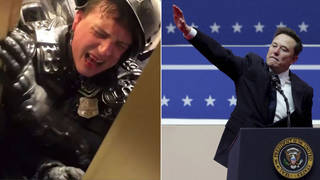
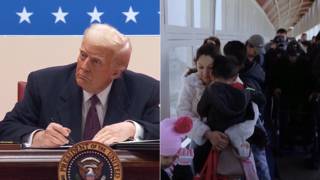
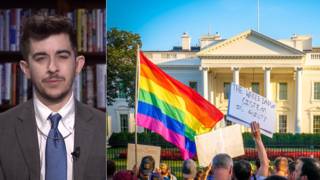
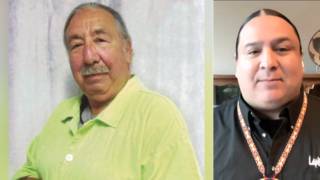







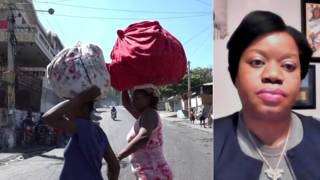
Media Options